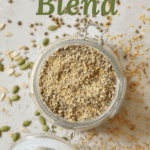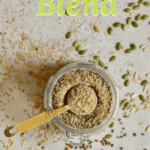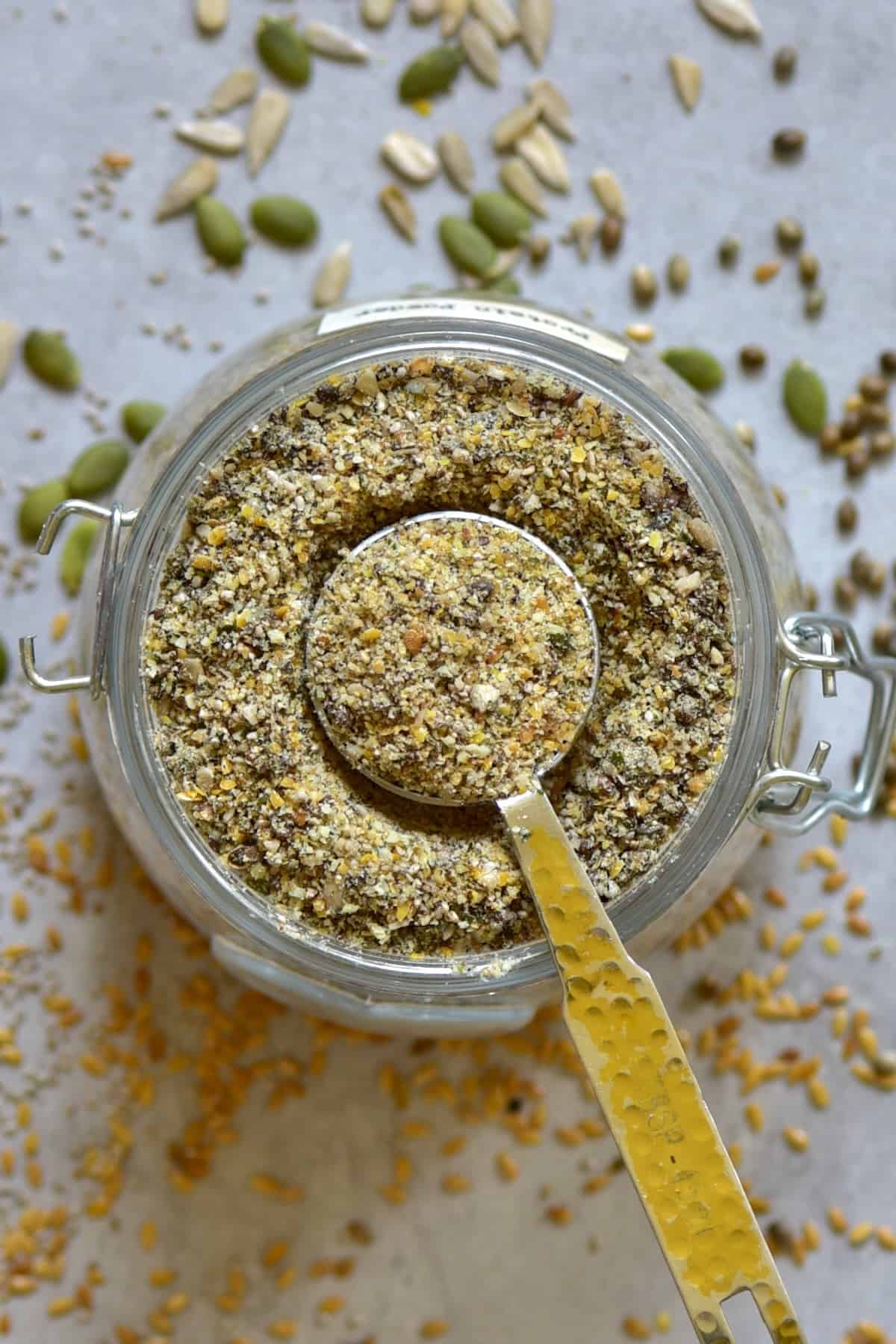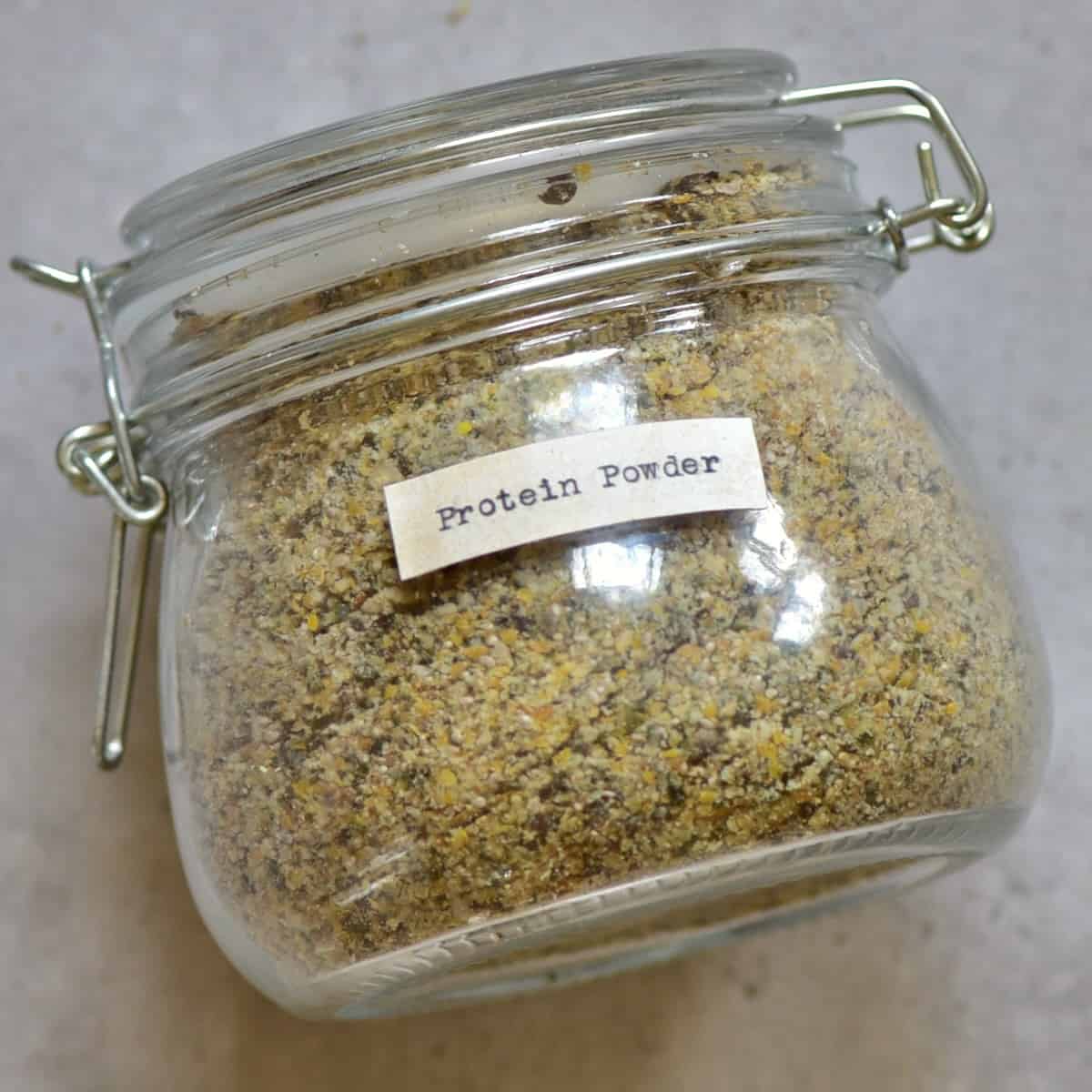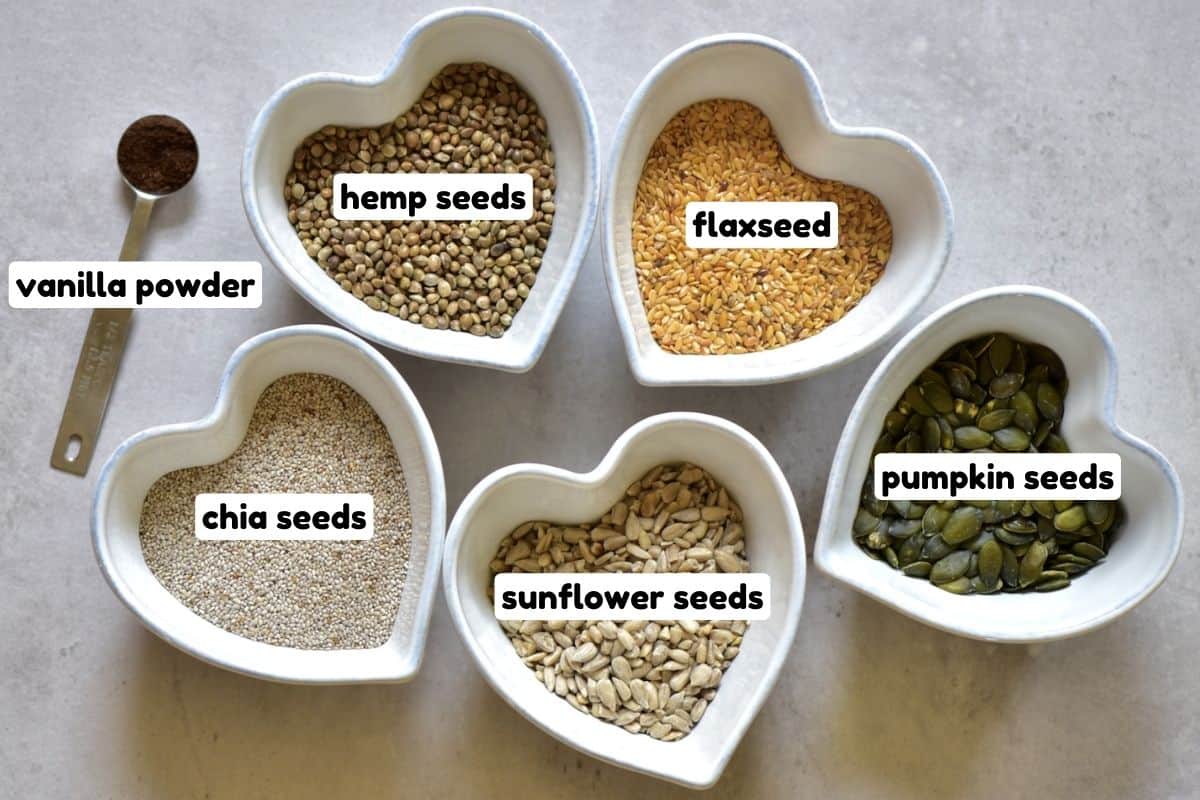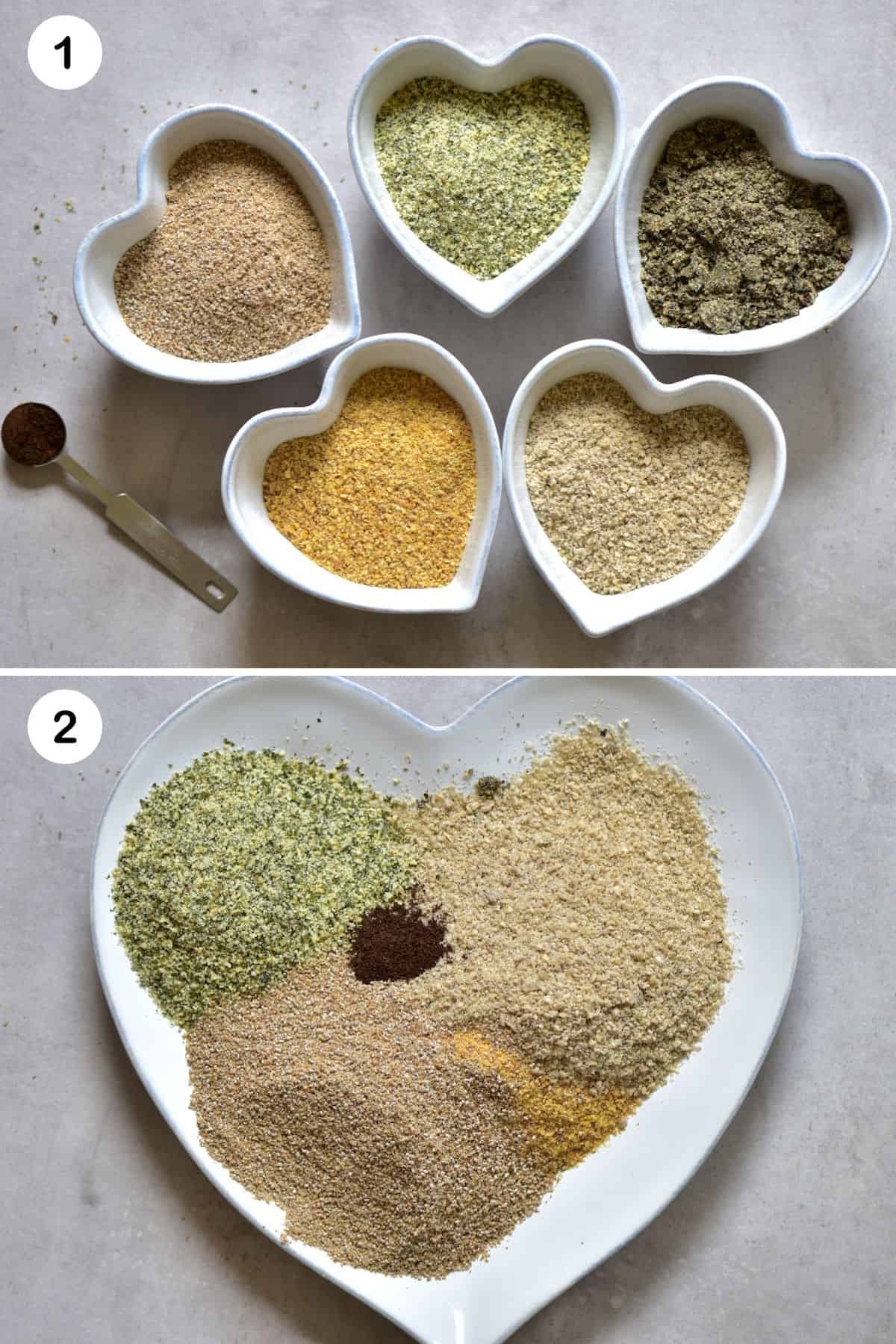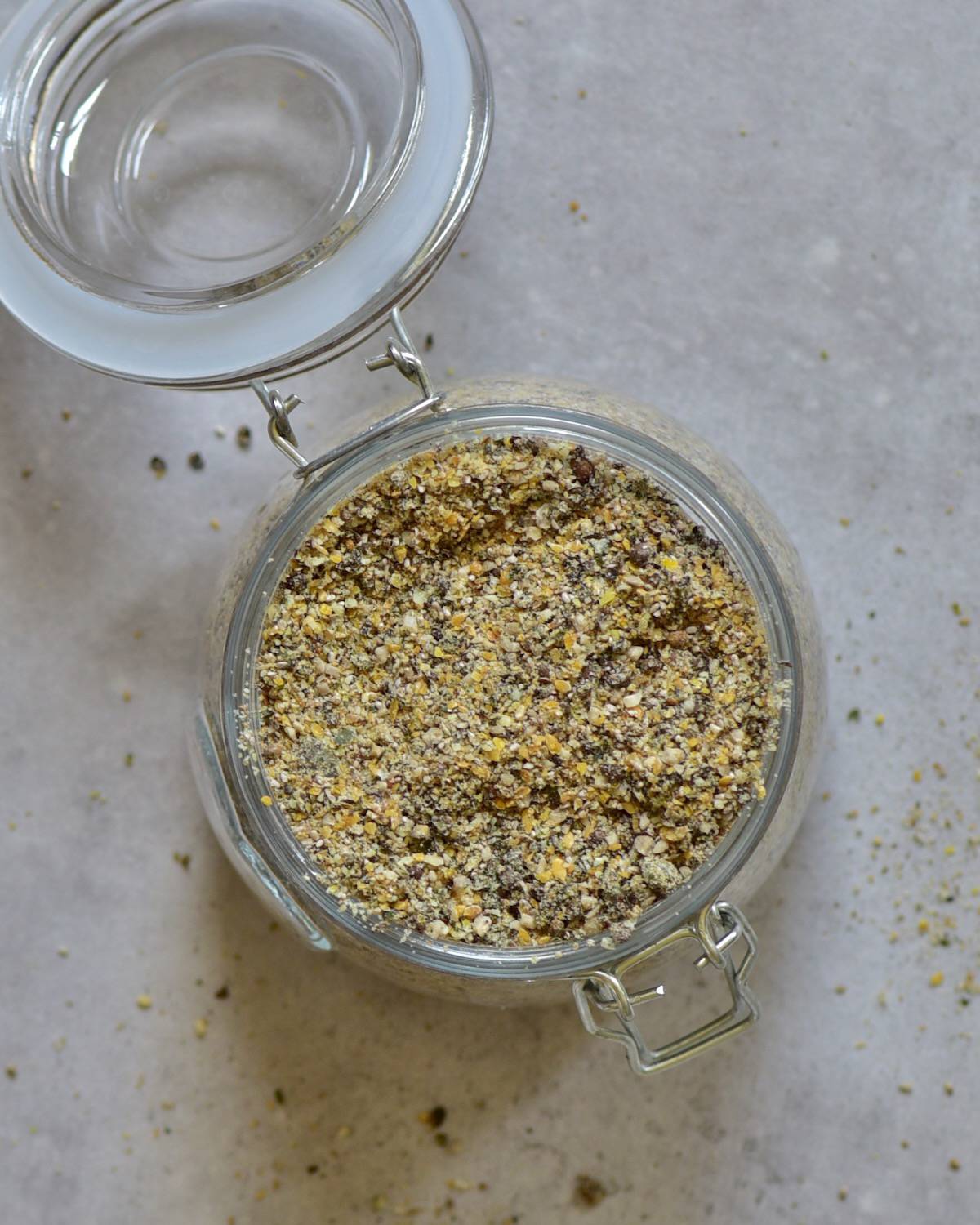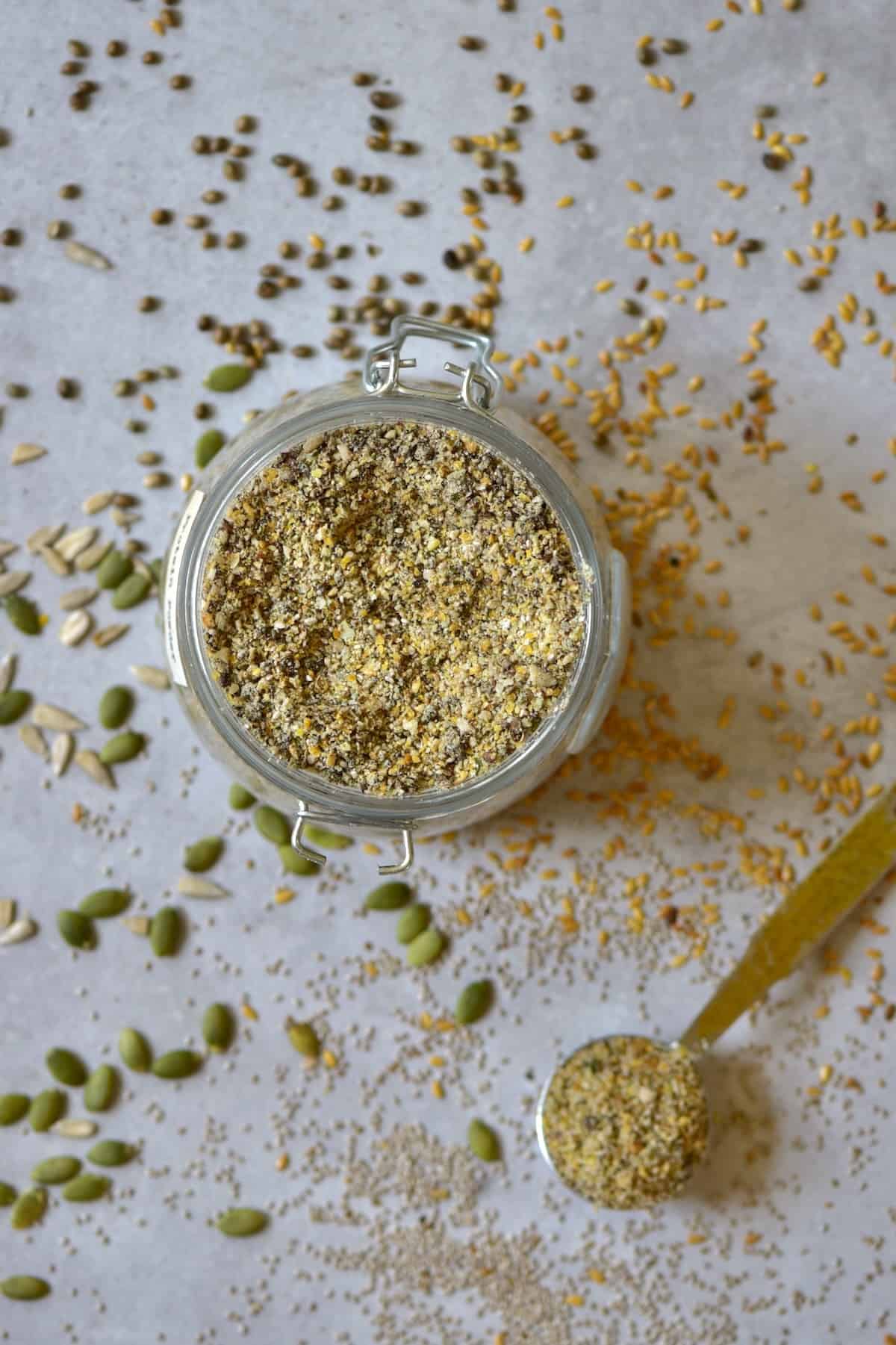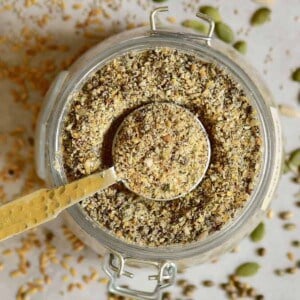This homemade protein powder uses a blend of 5 high-protein seeds for a cheaper (especially if they’re already in your pantry), cleaner way to boost your protein with no chemicals, fillers, or gums. Just clean, high-quality ingredients, easy to customize to your dietary and flavor preferences. Combined, this DIY vegan protein powder recipe will help keep you feeling full for longer, aid with muscle growth and tissue repair, provide a vitamin/mineral and omega boost, and several other benefits. These may include reduced inflammation and blood pressure, regulating blood sugar levels, and improved skin, brain, and heart health. While it’s not 100% comparable to store-bought versions, this DIY protein powder is quick and simple to make and customize, will save you money, and is great to add to healthy smoothies, post-workout shakes, baked goods, stovetop oatmeal, salads, and more!
Ingredients for homemade protein powder
Hemp Seeds: Make sure to use shelled hemp seeds/ hemp hearts (the ones photographed aren’t shelled). The shells are too hard to digest. These seeds contain an optimal ratio of omega-6 to omega-3, several minerals, 30g protein per 100 grams, and are a high-quality complete source of plant-based protein. Chia Seeds: These tiny seeds contain 18g of protein per 100 grams, gut-healthy fiber, omega-3 fatty acids, and plenty of antioxidants. Flax Seeds: (aka linseed) You can use golden or brown linseed, which contain healthy omega-3s, lignans (a potent antioxidant), and about 18 g protein per 100 grams. Pumpkin seeds: (pepitas) These rich, green seeds contain 19g of protein per 100 grams and are a rich source of magnesium, iron, zinc, and plenty of antioxidants. Sunflower Seeds: Last but not least, this small but mighty seed is filled with nutrients, including a healthy dose of magnesium, potassium, zinc, iron, folate, and vitamins A, B, and E. They also contain 21-23g protein per 100g and ZERO cholesterol. Vanilla powder: (Optional) If you plan to serve the homemade protein powder in sweet formats only, a small amount of vanilla powder is a great way to boost flavor.
Alternatively, add 2-3 tbsp cacao powder for homemade chocolate protein powder or freeze-dried berries for a berry flavor.
What else could I add for a protein boost?
There are several ways to customize this DIY protein powder with additional high-protein ingredients, such as:
Peanut powder (which contains 48-49 grams of protein per 100 grams) Pistachios (which contain 20 g protein per 100 grams) – or cashews, walnuts, almonds Pea protein isolate (which contains a whopping 80-84 g protein per 100 grams) Whey protein isolate (dairy-based, 90 g protein per 100 grams!) Whey protein concentrate (usually between 70-80g protein per 100 grams)
How to make your own protein powder
Grind each seed individually in a high-speed blender or coffee/spice grinder. As a general rule:
Hard seeds/nuts: Grind for 10-15 seconds or until you achieve a fine, powdery consistency. Pause and check the consistency to avoid over-processing them, as they can start turning into seed butter. Soft seeds: Grind for 5-10 seconds, and be cautious not to over-process them, or they can become gummy.
Then, transfer the protein blend to an airtight jar/container and shake/stir to combine.
Why it’s important to grind each seed separately
For the best consistency: Just like when making nut and seed butter, different seeds have different hardness and oil levels. That means they’ll take a different amount of time to achieve the same powdery consistency. Grinding them individually allows you to ensure that you have the most consistent and even texture throughout. To avoid over-processing: As certain seeds, like chia and flax seeds, become gummy if over-processed – which is likely when blending everything together. For maximum nutrients: The longer you grind ingredients, the hotter the machine becomes, which can lead to nutrient degradation. Individual grinding ensures this is kept to a minimum. Likewise, some seeds, like flax seeds, are best if ground just before using them to preserve nutrients (their Omega-3 fatty acids) and keep them from becoming bitter too soon. To customize the blend: For example, the ratio within the blend, thus overall flavor and texture. That way, you can more easily experiment with various combinations and proportions. If you aren’t keen on any of the ingredients, just leave it out or swap it for something similar.
Best ways to use protein powder
This homemade vegan protein powder is great as a ‘topper’ or ‘add-in’ to boost protein content in:
Hot oatmeal and cold overnight oats Healthy smoothies, protein shakes, and smoothie bowls A yogurt parfait Over salads and soups, or in sauces (minus the vanilla) Sprinkled over a bagel or avocado toast As a topper for pancakes, waffles, and more (with berries and maple syrup) As a flour substitute (in small quantities) in pancakes, cookies, and quick breads
Storage instructions
Ground flaxseed/ chia seeds have the shortest shelf life due to their high oil content, which can quickly turn them rancid once ground. Combat this by only grinding them fresh or storing them separately in an airtight container in the fridge for 1 week or in the freezer for up to 3 months. The remaining seed blend can be stored in the refrigerator for 1-2 months or in the freezer for up to 6 months.
More protein-rich recipes
Omega Seed Butter (5-Seed Butter) Breakfast Smoothie with Strawberries Cacao & Almond Protein Balls High-Protein Waffles
If you try this recipe, let me know how it goes in the comments below. I’d appreciate a recipe card rating and would love to see your recipe recreations – tag me on Instagram @Alphafoodie!
